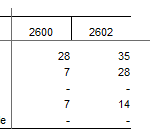Introduction
Welcome to SuperCROSS, the desktop client for the SuperSTAR platform. This section introduces some of the key SuperCROSS features:
Record View
One of the major strengths of a SuperSTAR database is the inclusion of unit record data. The record view feature lets you access the individual unit records that make up the values in your table.
For example, suppose you want to explore in more detail the 35 records for Clerical customers in the ACT. Simply:
Select the cell and right-click:
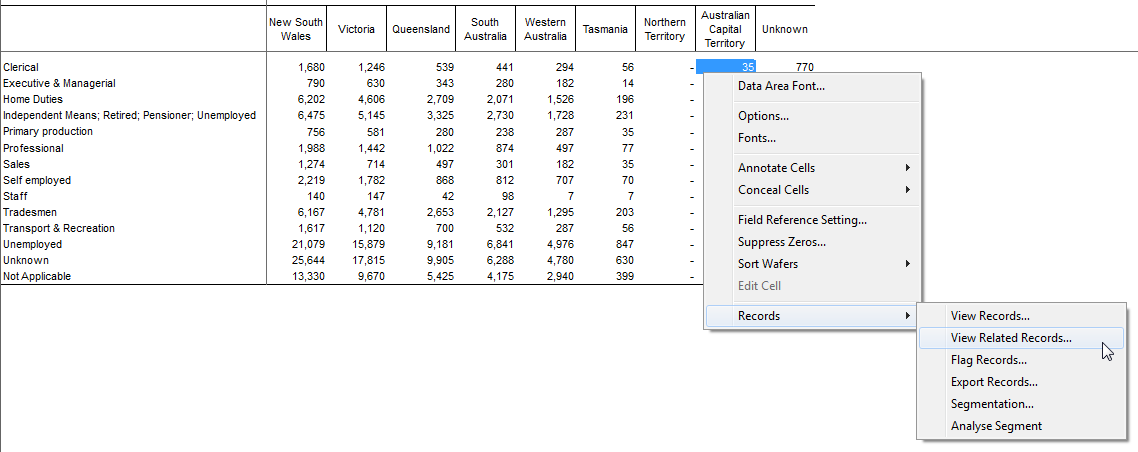
Then select the fields you want to see from the underlying records:

The underlying records display. You can export the record data to CSV or text file:
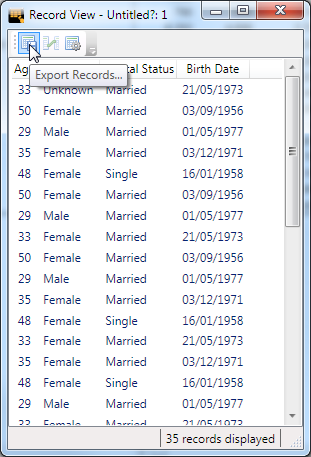
Learn More about Record View...
ColourMatrix
The SuperCROSS ColourMatrix feature uses colour to highlight potential relationships between table variables and help you identify ranges and patterns. This can provide an easier way of interpreting table results and help you understand their significance. It can be particularly useful for larger and more complex tables where the relationships may not be obvious.
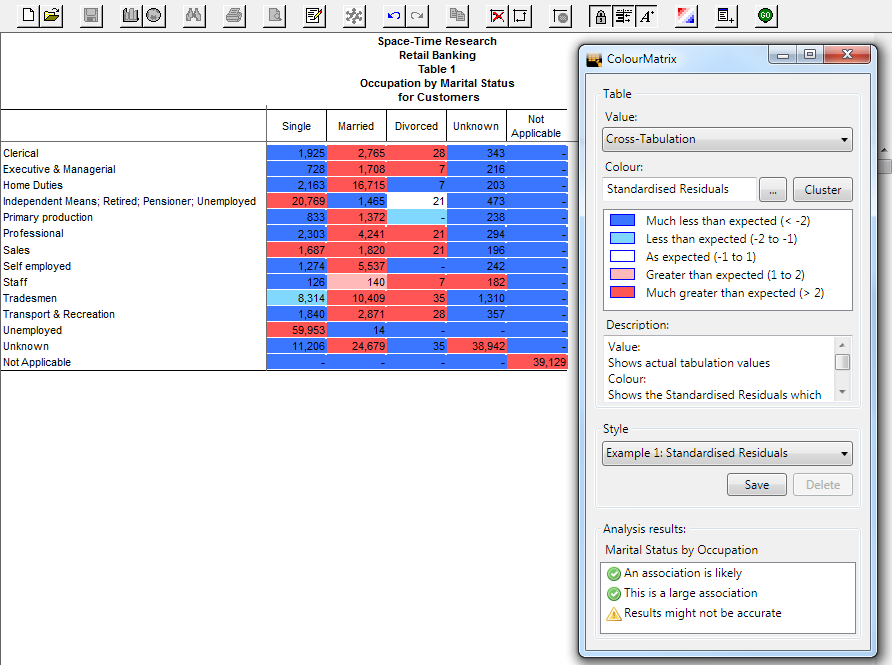
Learn More about ColourMatrix...
Drill Up and Down in Hierarchies
SuperCROSS tables are interactive.
Hierarchical fields are a particularly powerful example of this. When you have hierarchical fields in your table you can right-click on a column or row heading and use the Drill > Up and Drill > Down options to navigate up or down through the hierarchy.
For example, the following table contains geographical data. You can right-click one of the states and use the Drill > Down option to explore the results for the suburbs and postcodes within that state:
Learn More about Navigating Hierarchies...
User Defined Fields
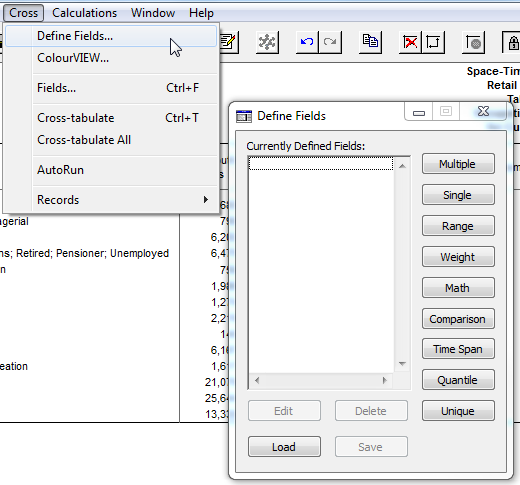
User Defined Fields (UDFs) are new (synthetic) fields that you can create directly in SuperCROSS based on existing fields and measures.
You can use UDFs to do things like:
- Compare two numeric fields.
Perform calculations across several numeric fields.
Range or band a continuous numeric field.
Copy data from a child fact table to a parent. For example, deriving household income based on individual income.
Determine if a parent object contains any children.
Calculate a time or data span.
Apply weights to a value set to be used in a subsequent calculation.
Use the Cross > Define Fields menu option to start creating user defined fields:
Learn More about User Defined Fields...
Batch Processing
You can use SuperCROSS to carry out batch processing.
When SuperCROSS is configured to use this mode, it acts like a server. It will regularly poll a specific directory (referred to as the "interchange directory") to check for any new TXD or SCS format files. If it finds a new file in the interchange directory, SuperCROSS will automatically process the job, running the cross tabulation and creating output files with the results of the tabulation. When you set up batch processing, you can specify which output formats you want to generate and SuperCROSS will automatically create output files in all of these formats.
Set up batch processing:
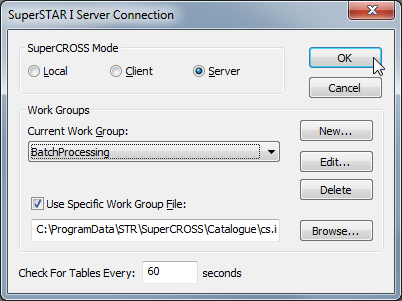
Configure mandatory output formats:
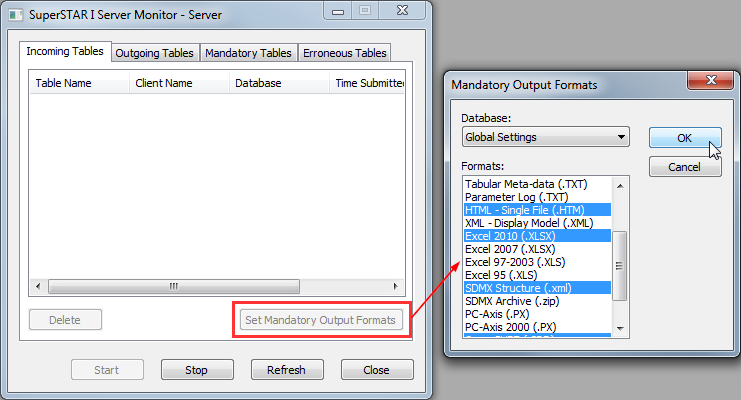
Copy files to the input directory:
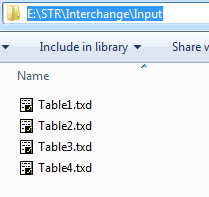
SuperCROSS automatically tabulates the TXDs and creates the output formats:

Learn More about Batch Processing...
Metadata
SuperCROSS features powerful metadata support. You can use metadata to add additional descriptive information to fields. For example:
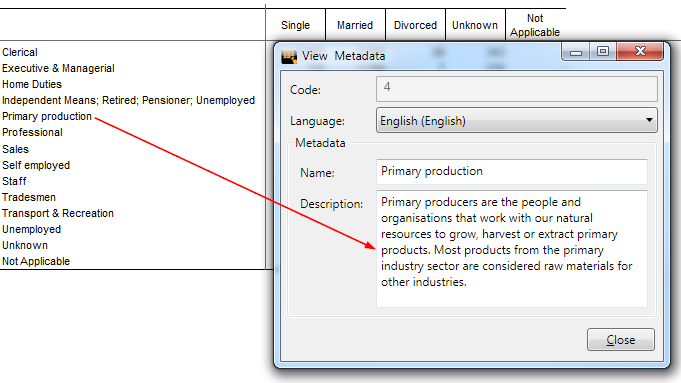
Metadata can be configured at the server level and in the SuperCROSS client.
Learn More about Metadata...
Confidentiality
SuperCROSS has built-in confidentiality rules. These rules add an element of random rounding, to help protect against accidentally disclosing confidential information in your table.
Typically, these rules are used to add an element of random rounding to very small cell values. For example, the 0-3 Rounding rule randomly rounds values between 0 and 3 up or down to 0 or 3.
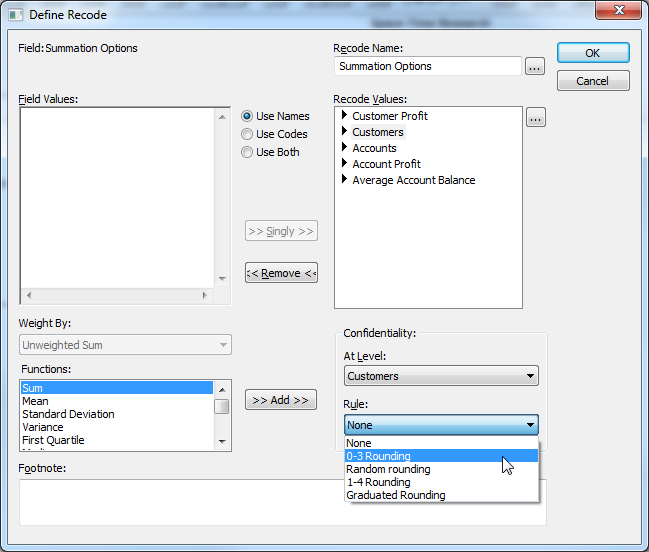
Learn More about Confidentiality...
Next Steps...
If you're ready to get started with SuperCROSS, then we recommend you start by following the Getting Started Guide. This tutorial walks you through how to use SuperCROSS to create a simple table and perform a cross tabulation.




